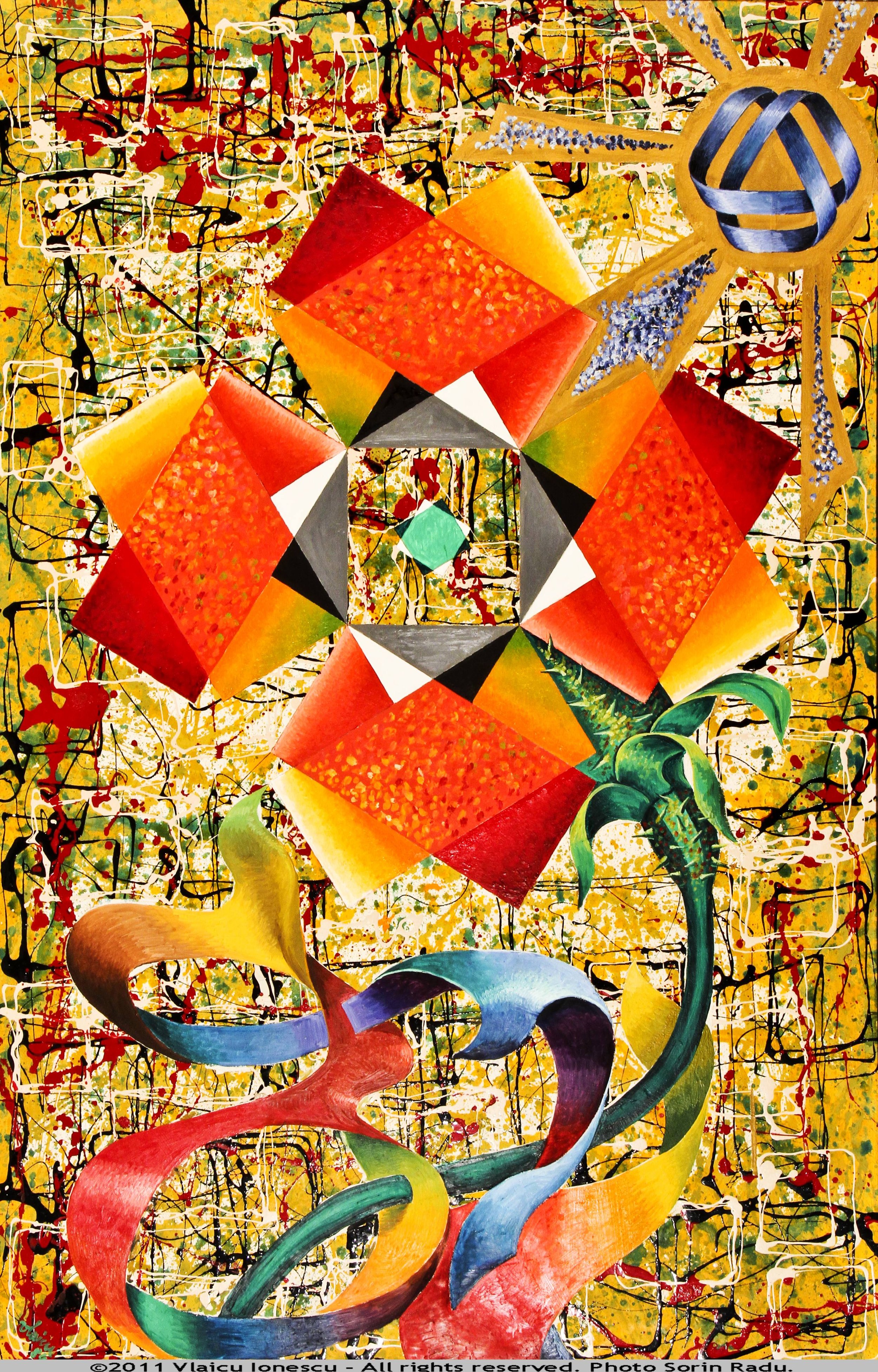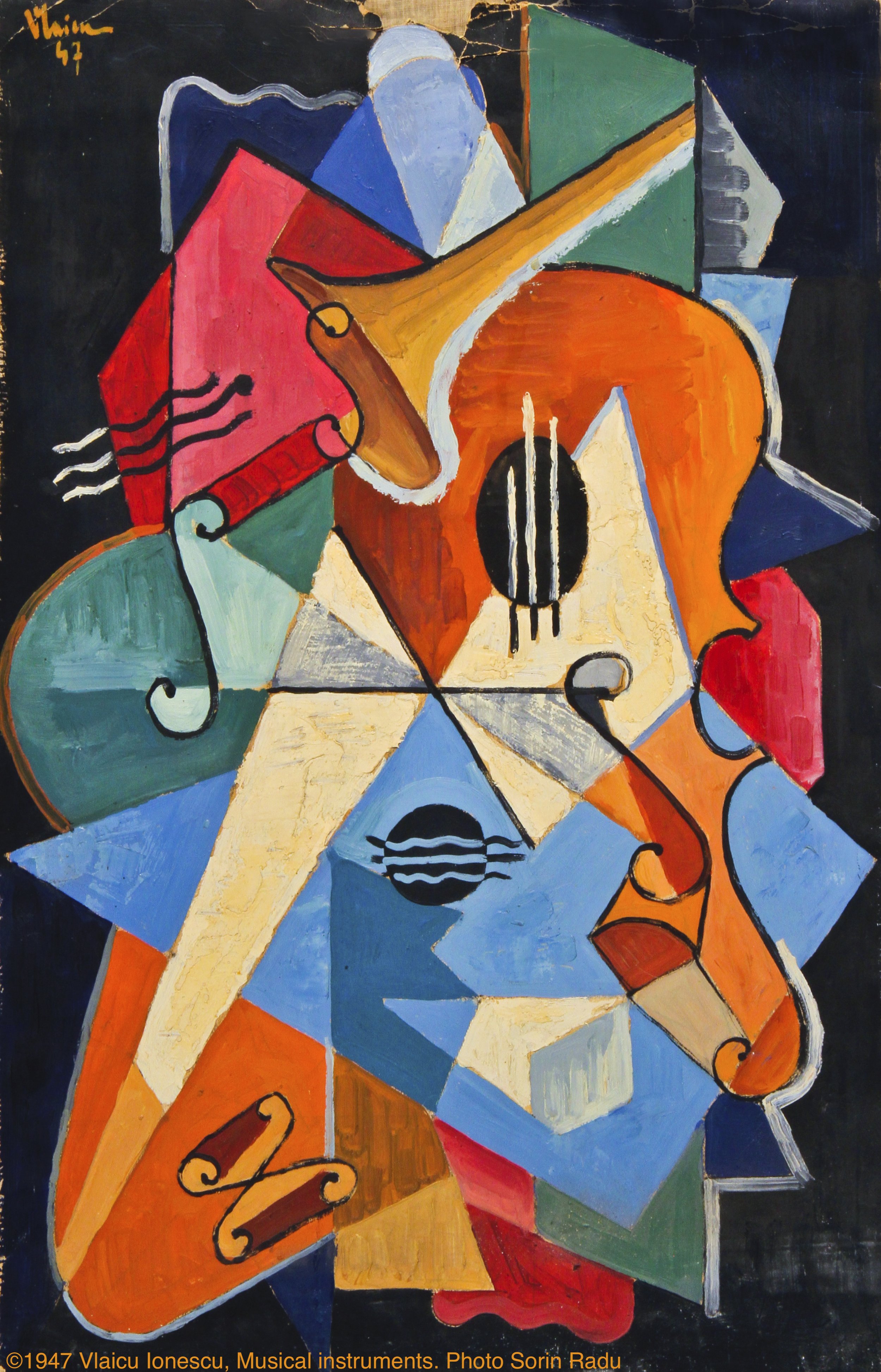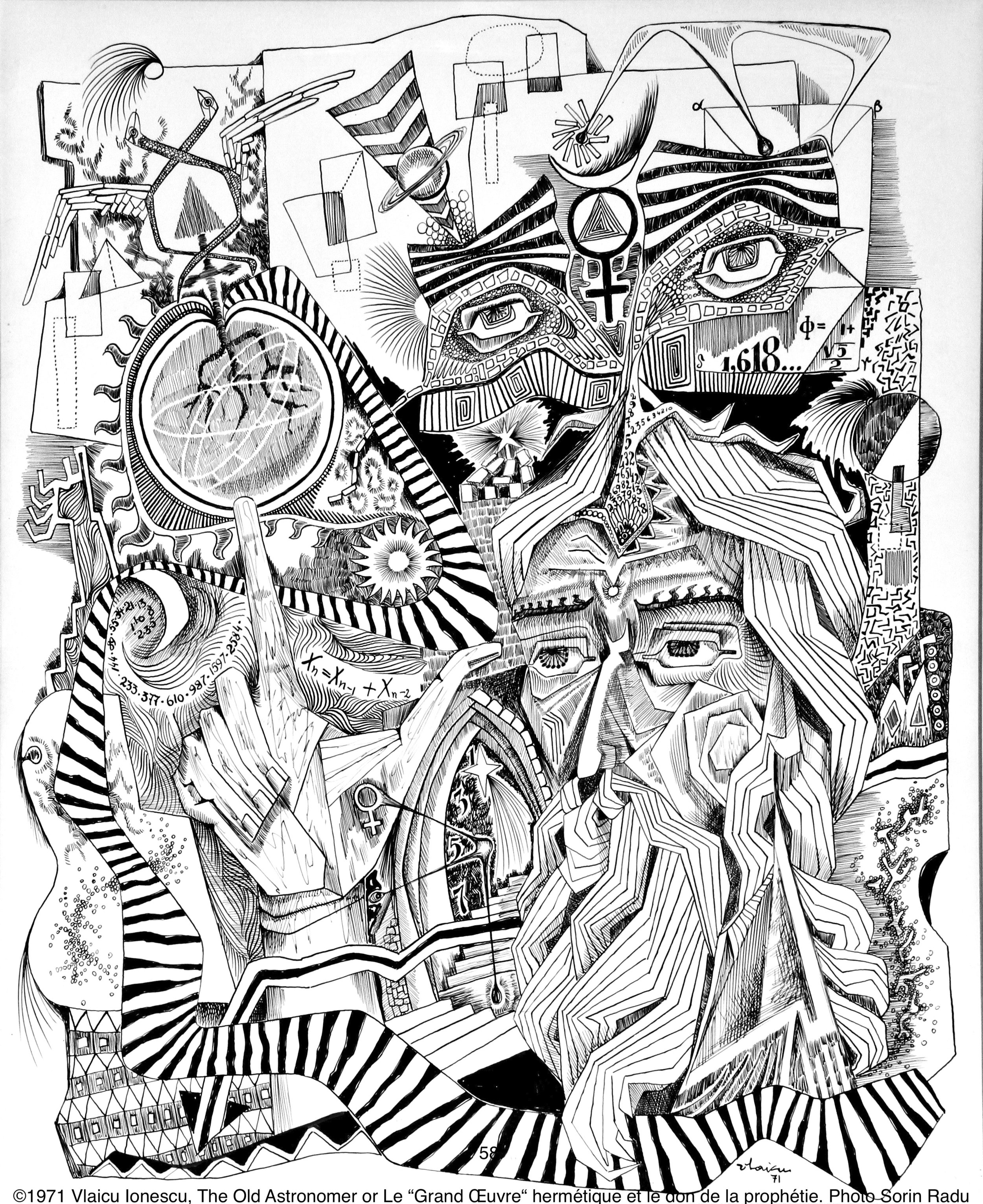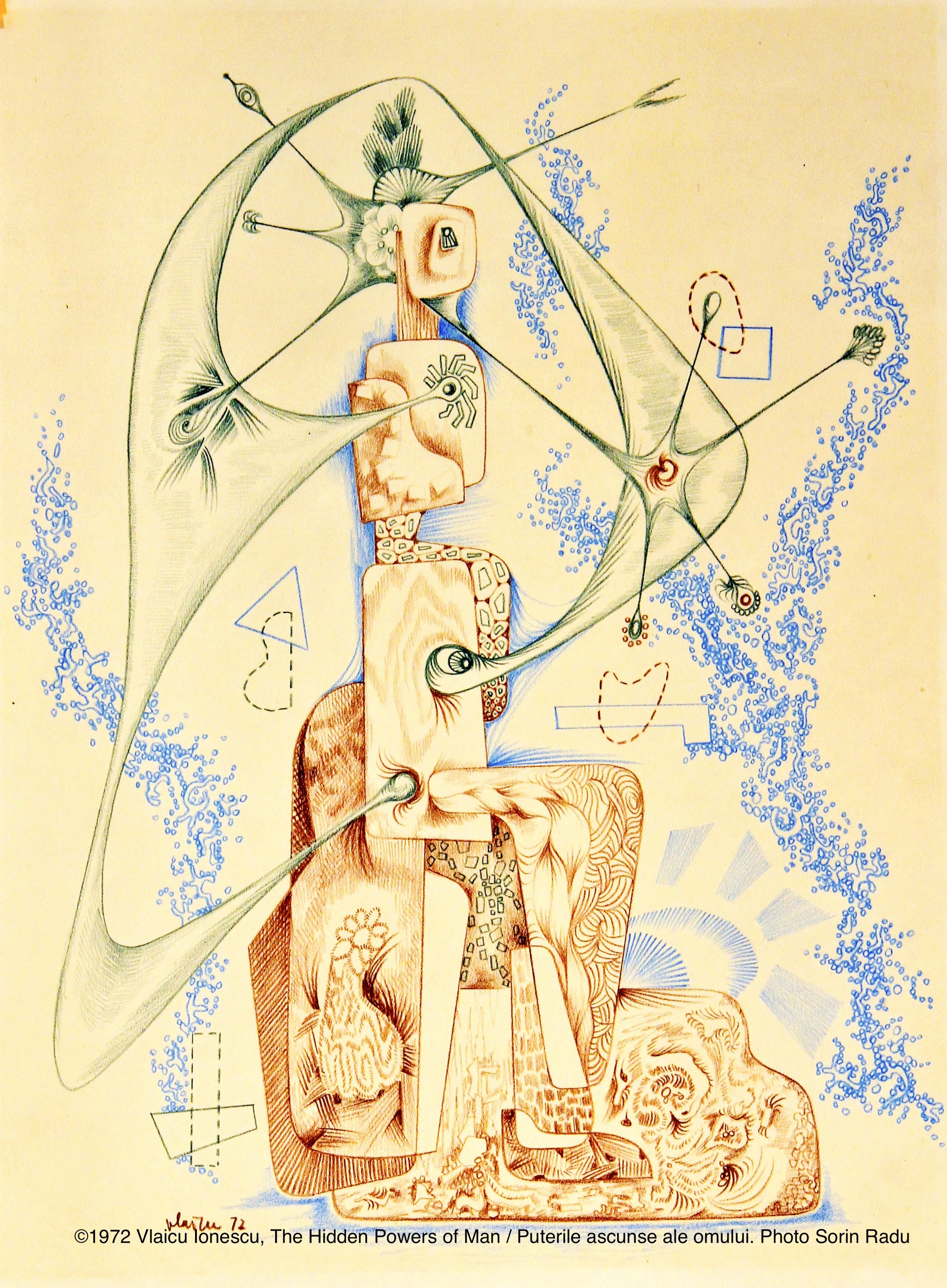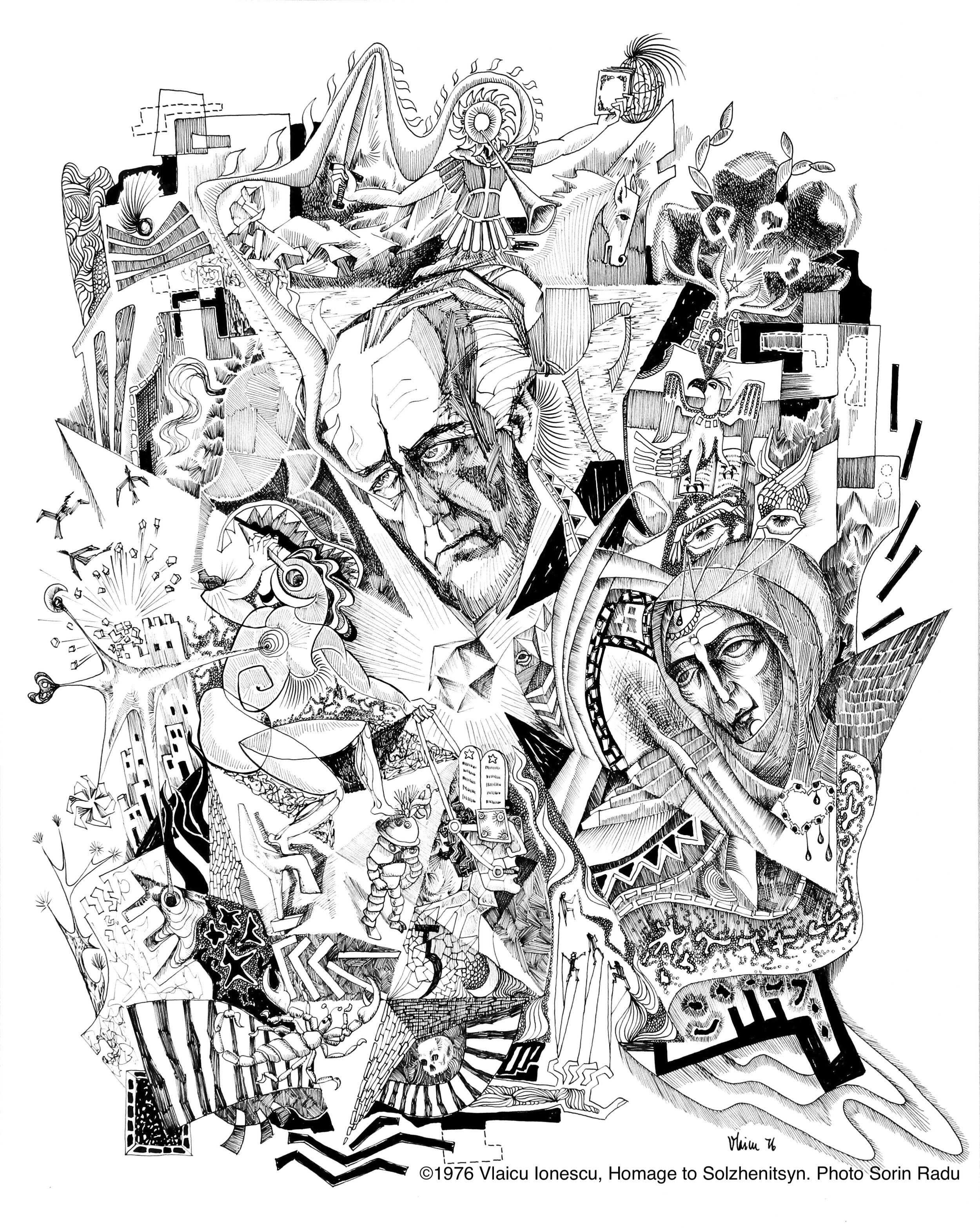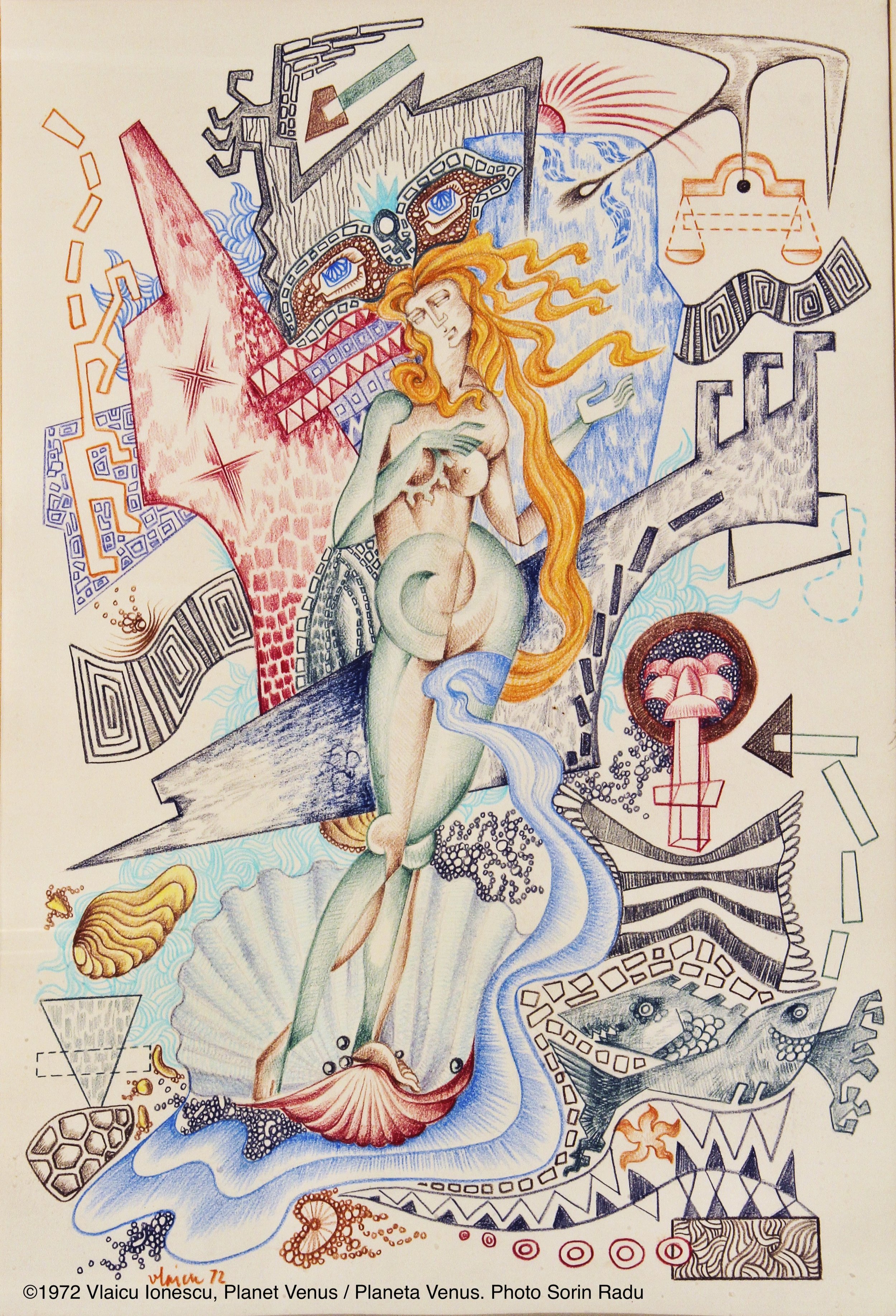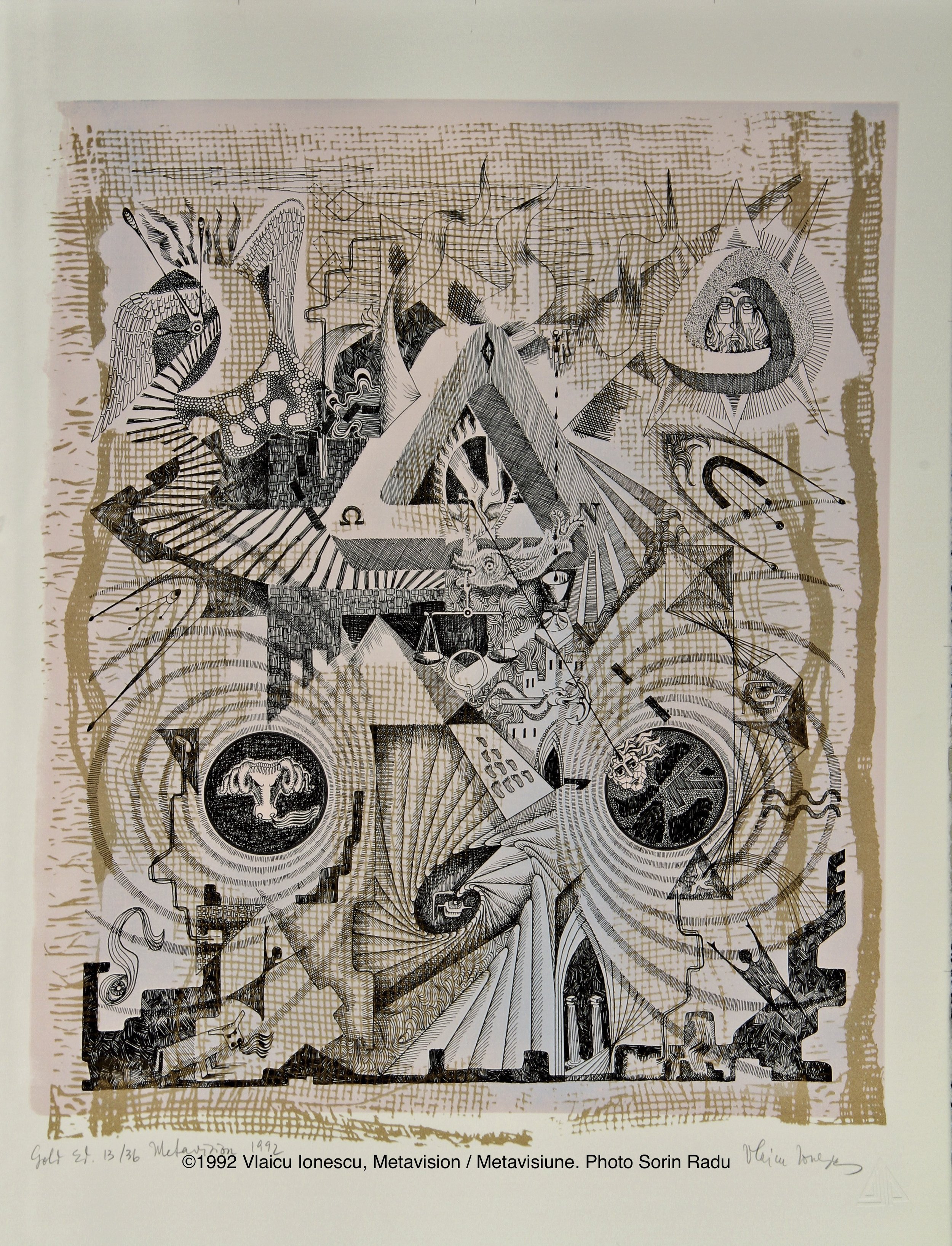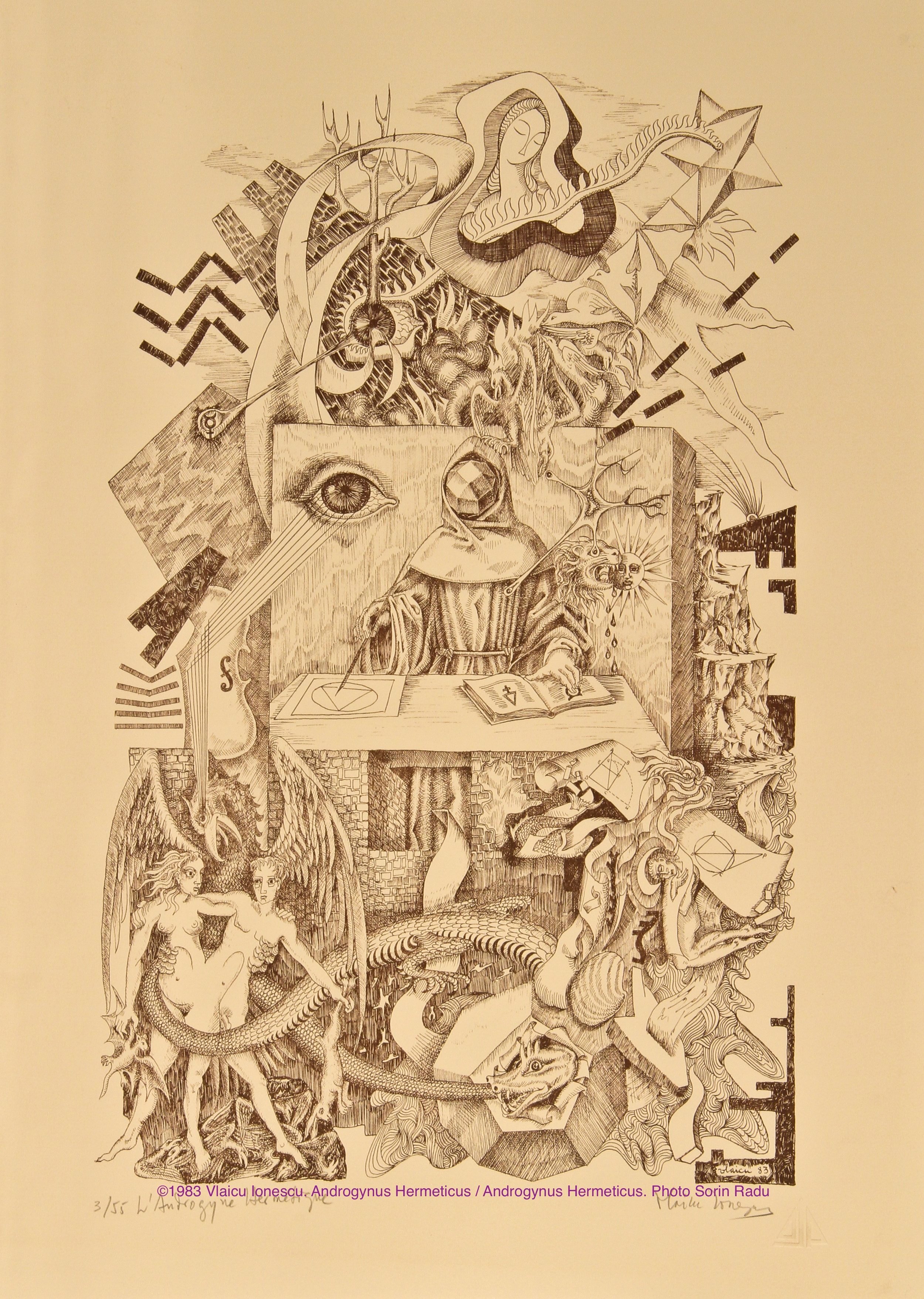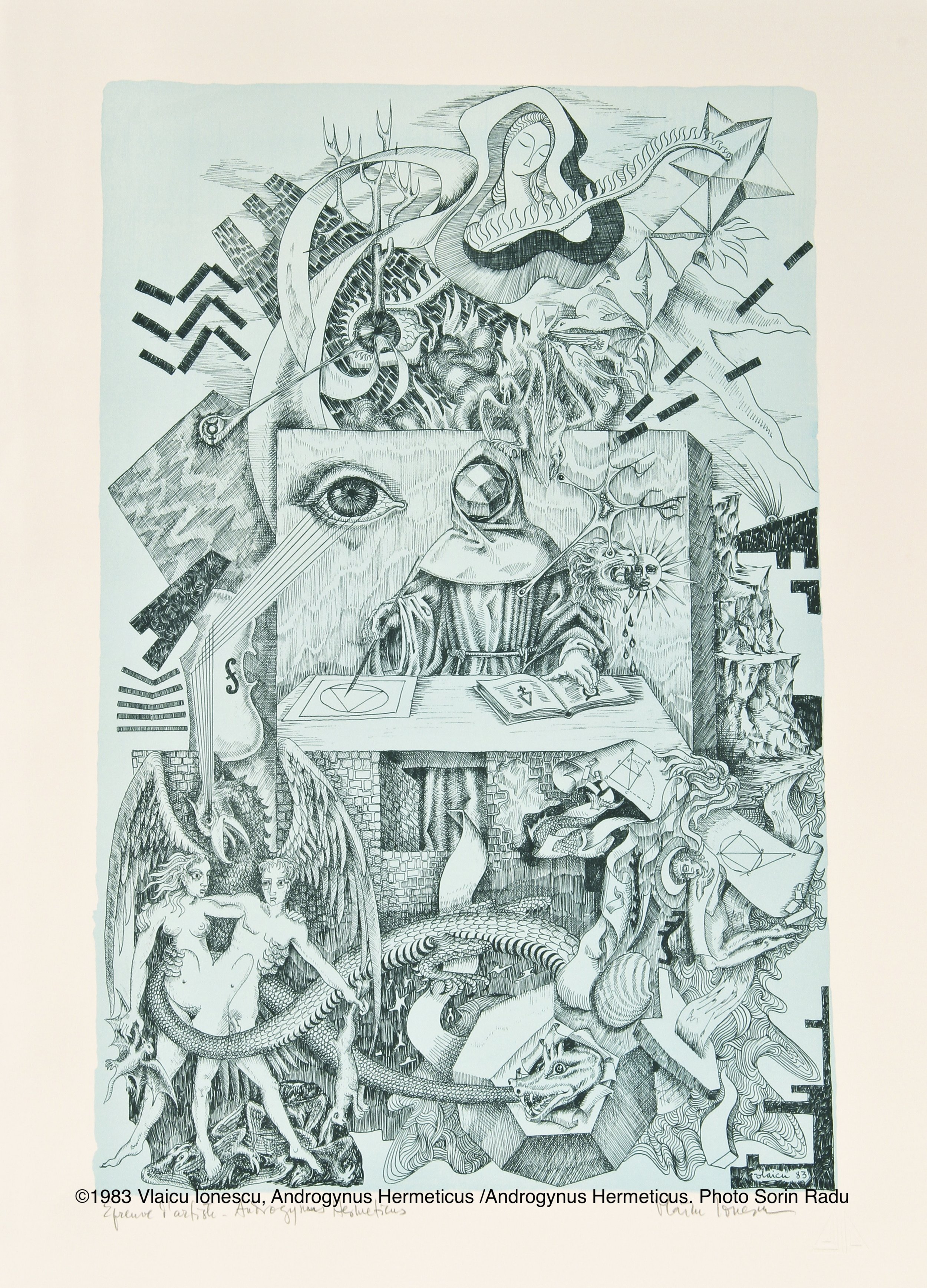“Painting is a soul made visible. It is born, like a pearl, from a lesion, a lesion provoked in us by the desire for perfection.”
The Work of Art
The work of art is the fruit of a double search and double invention: one contains the intrinsic experience of the artist and can reach the threshold of the transcendent and the depths of the subconscious; the other has to do with language, the selection of the most appropriate technical means for expressing a specific spiritual content.
In as far as inner experience is concerned our intention was to juxtapose two antagonistic faculties of human nature. One rises from the subconscious, intuition, and mystical experience, and leads to musical and non-figurative impressions the extreme manifestation of which can be found in “action painting” and abstract expressionism. The other is concerned with the intellect that gives form and unity of system and organic quality to the composition. Mondrian’s abstract constructivism is at the extreme of this path.
Given that in our spiritual structure both the subconscious and the rational are perfectly justified as creative forces, we had attempted over the years to unleash simultaneously these antagonistic faculties. I attempted to obtain a balanced synthesis through the control of graphic and color means and successive distillation, in which rhythms and chords coming from the depth of the subconscious blend with regulating lines calculated by the intellect and with geometric proportions taken out of the architecture of life.I searched for and unchaining from the world of appearances, tending to a necessary independence that is capable of expressing a being-in-the-world of a philosophical nature, oriented towards the transcendent through symbol and musicality, and transposed in color, proportion, and rhythm.I avoided the servile imitation of both material objects and geometric figures in themselves.
Geometry must remain a hidden subterranean force that marks the rhythm and organizes compositions. Even if one paints geometric figures they must be combined rhythmically and musically as Mondrian did, or receive individually through the topological alteration of their pure geometry as in Brancusi’s case.
Vlaicu Ionescu
1968
Self Portrait, 1947.
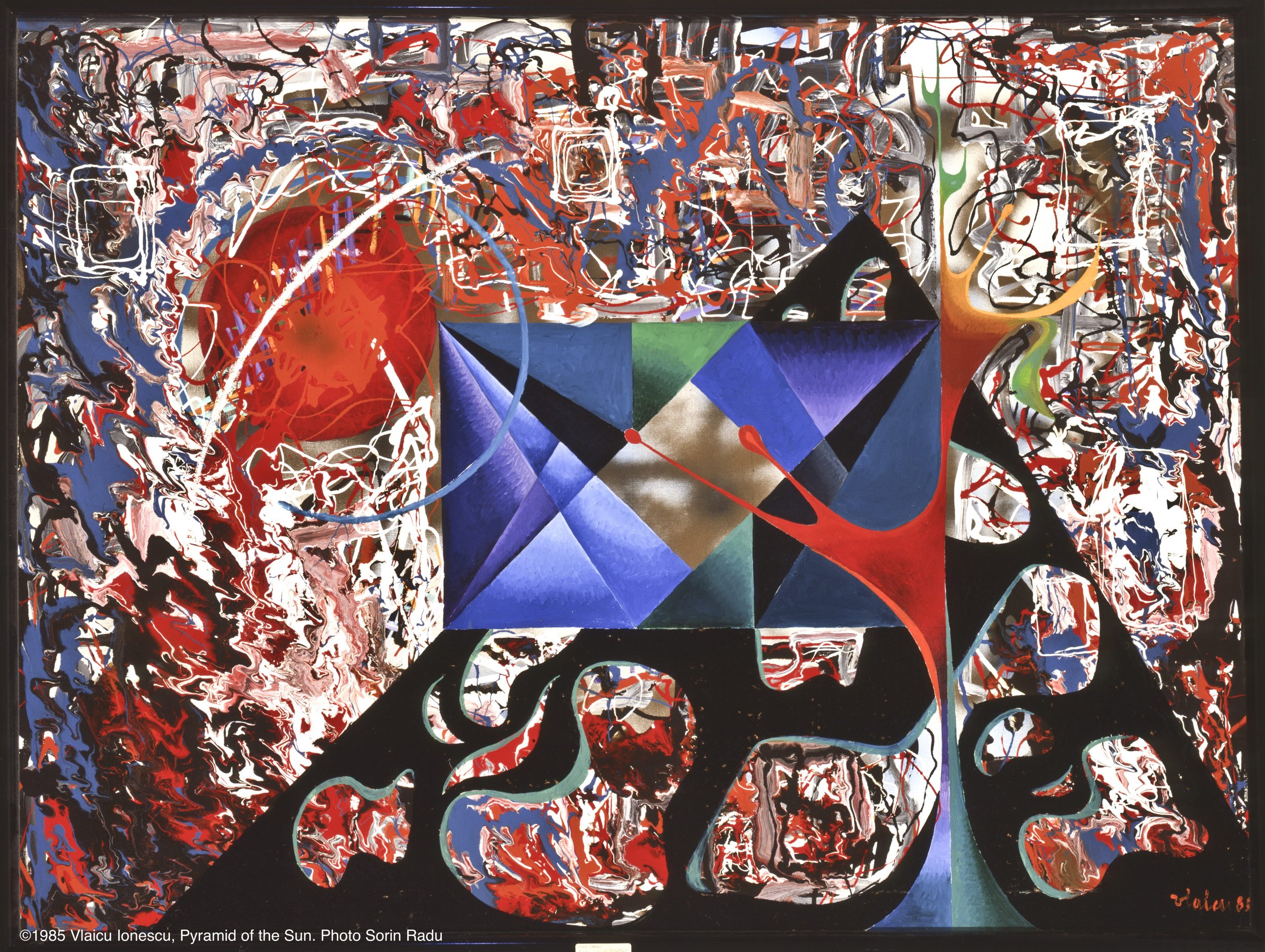
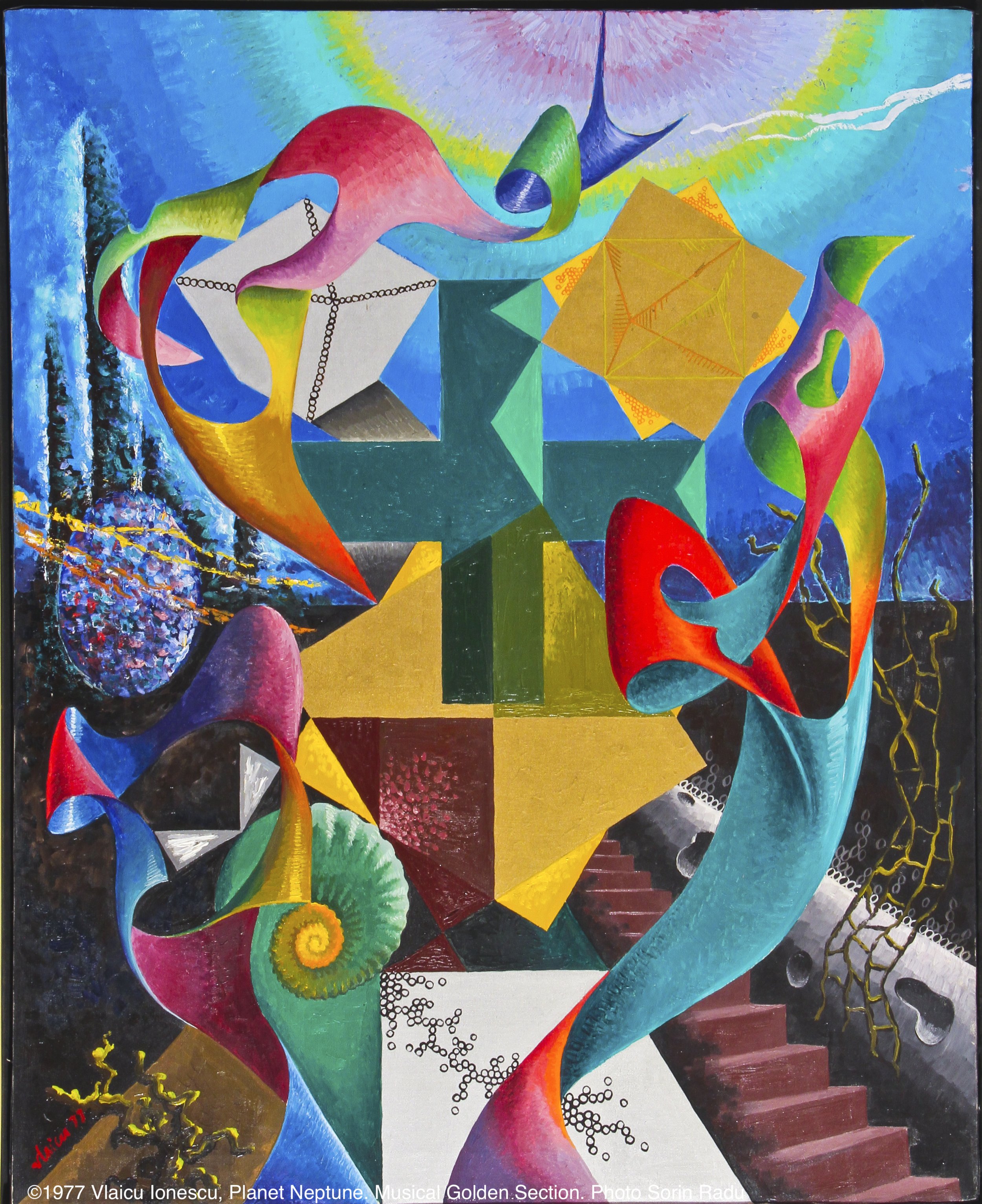
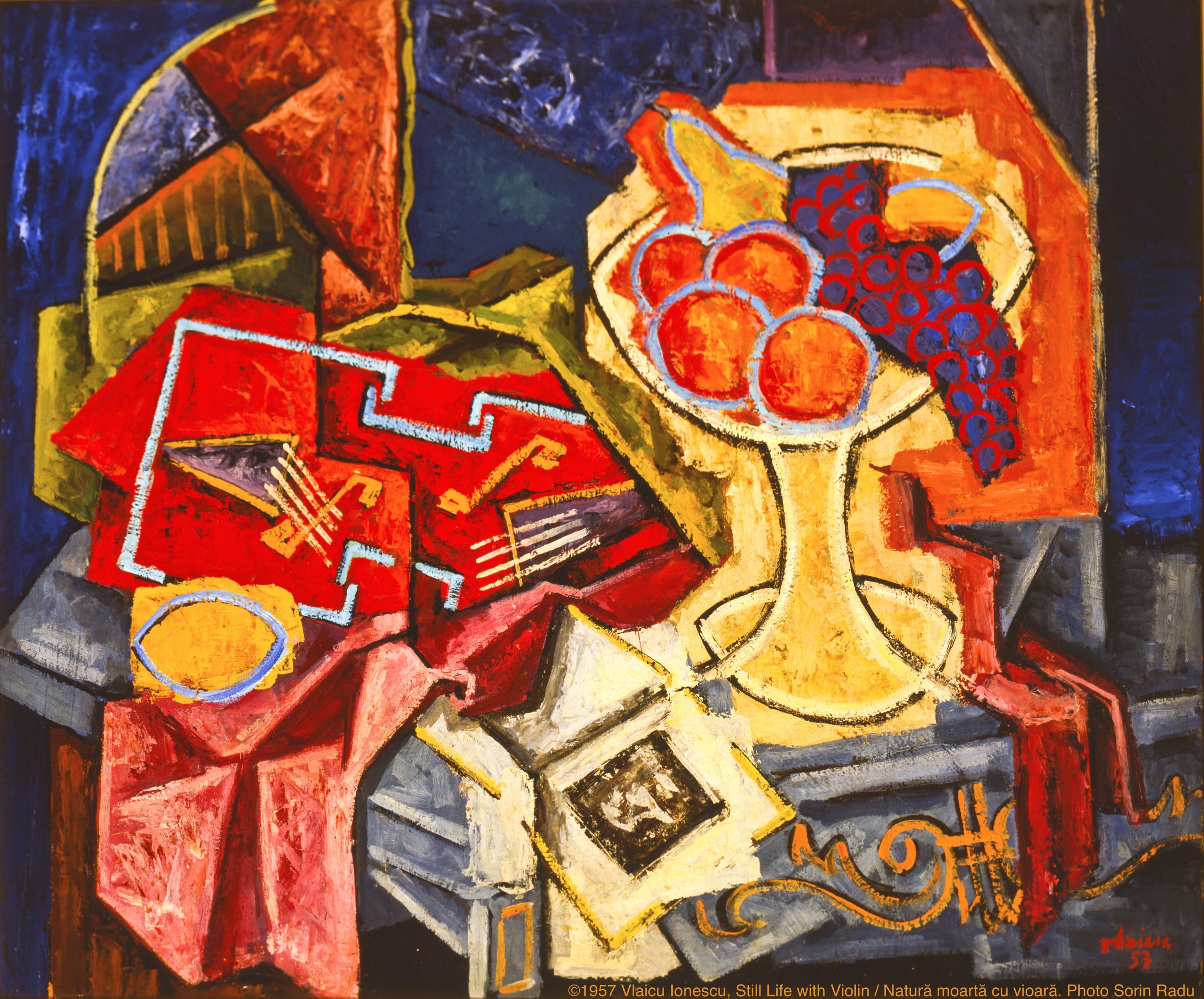
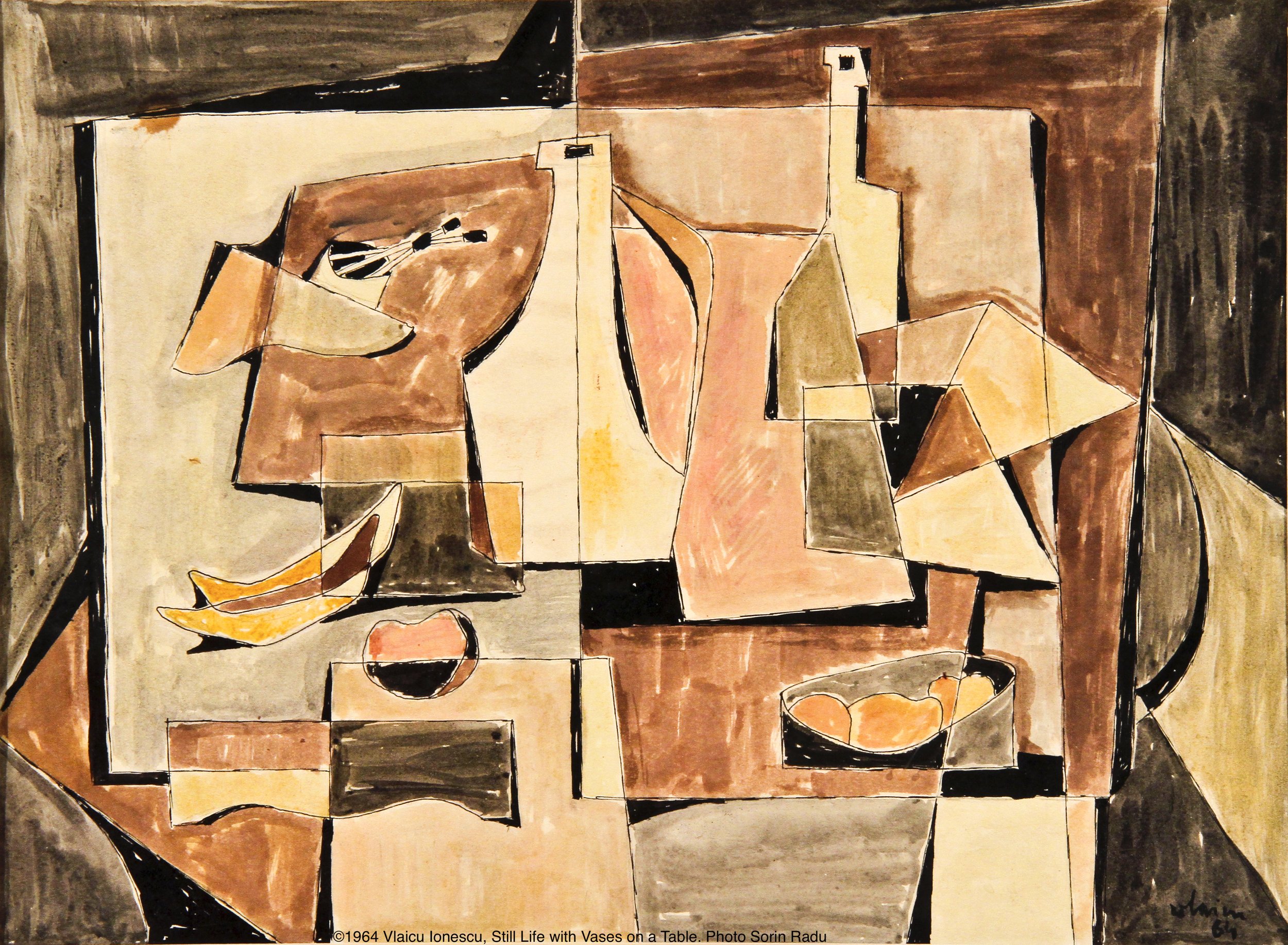
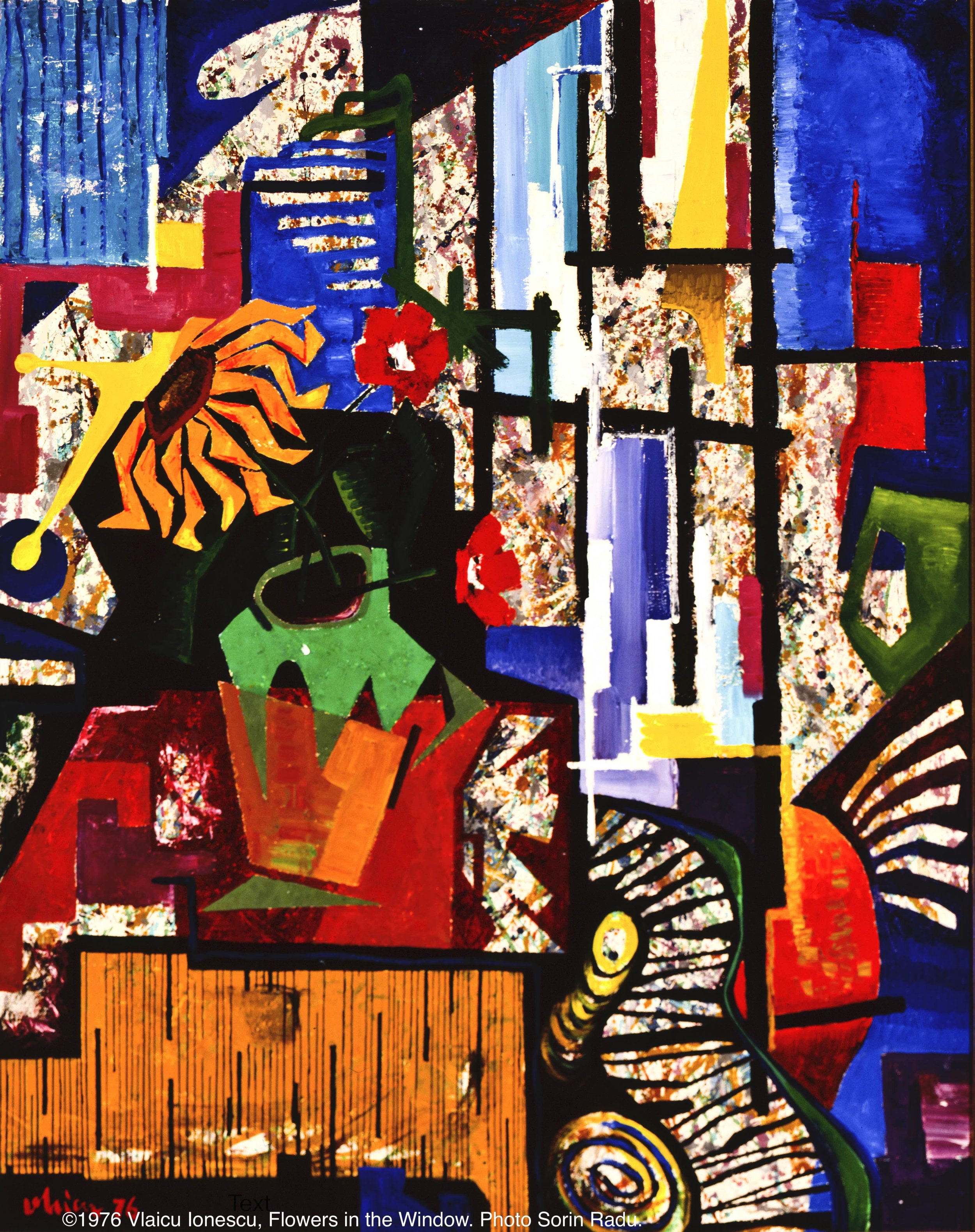

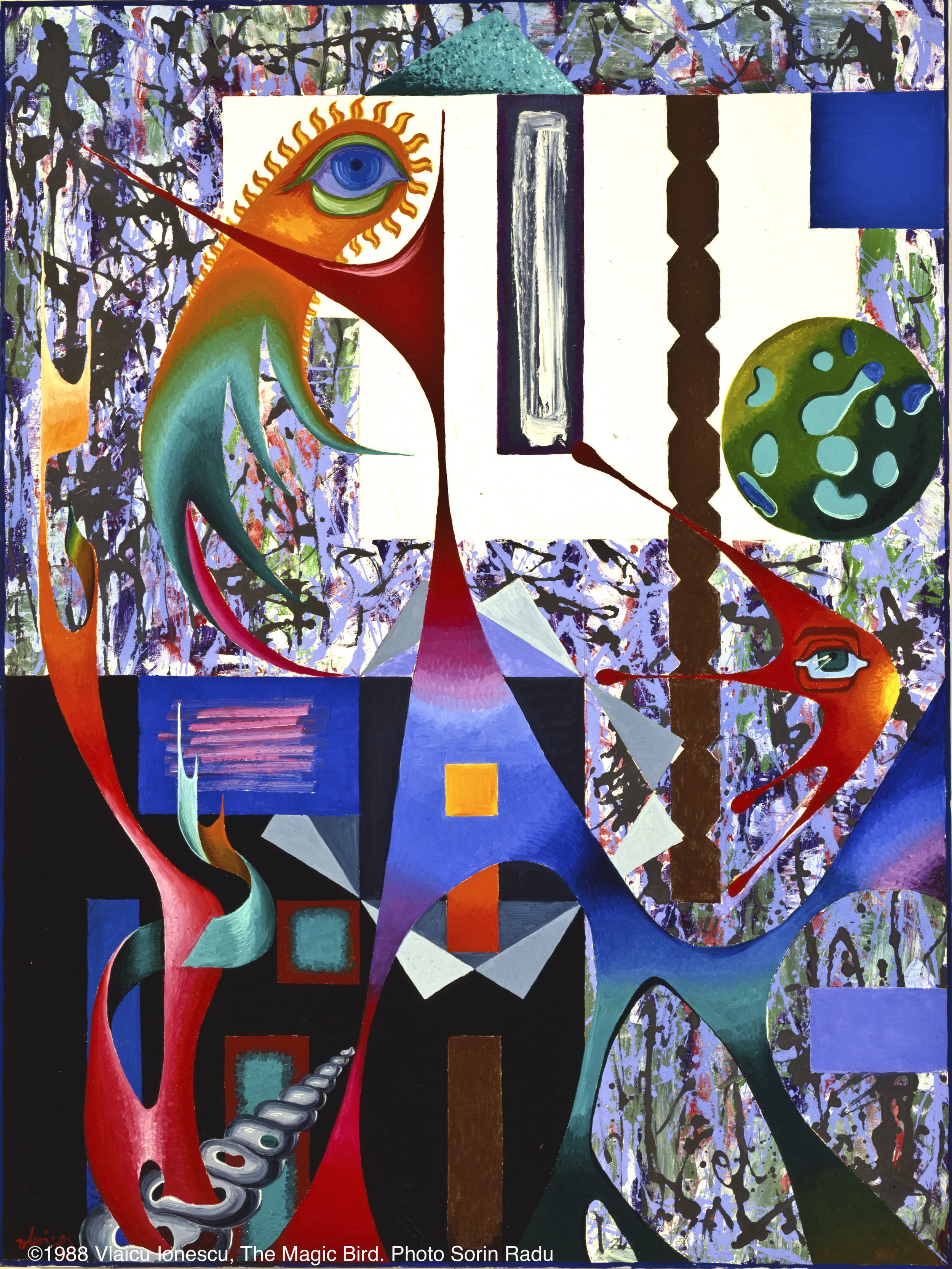
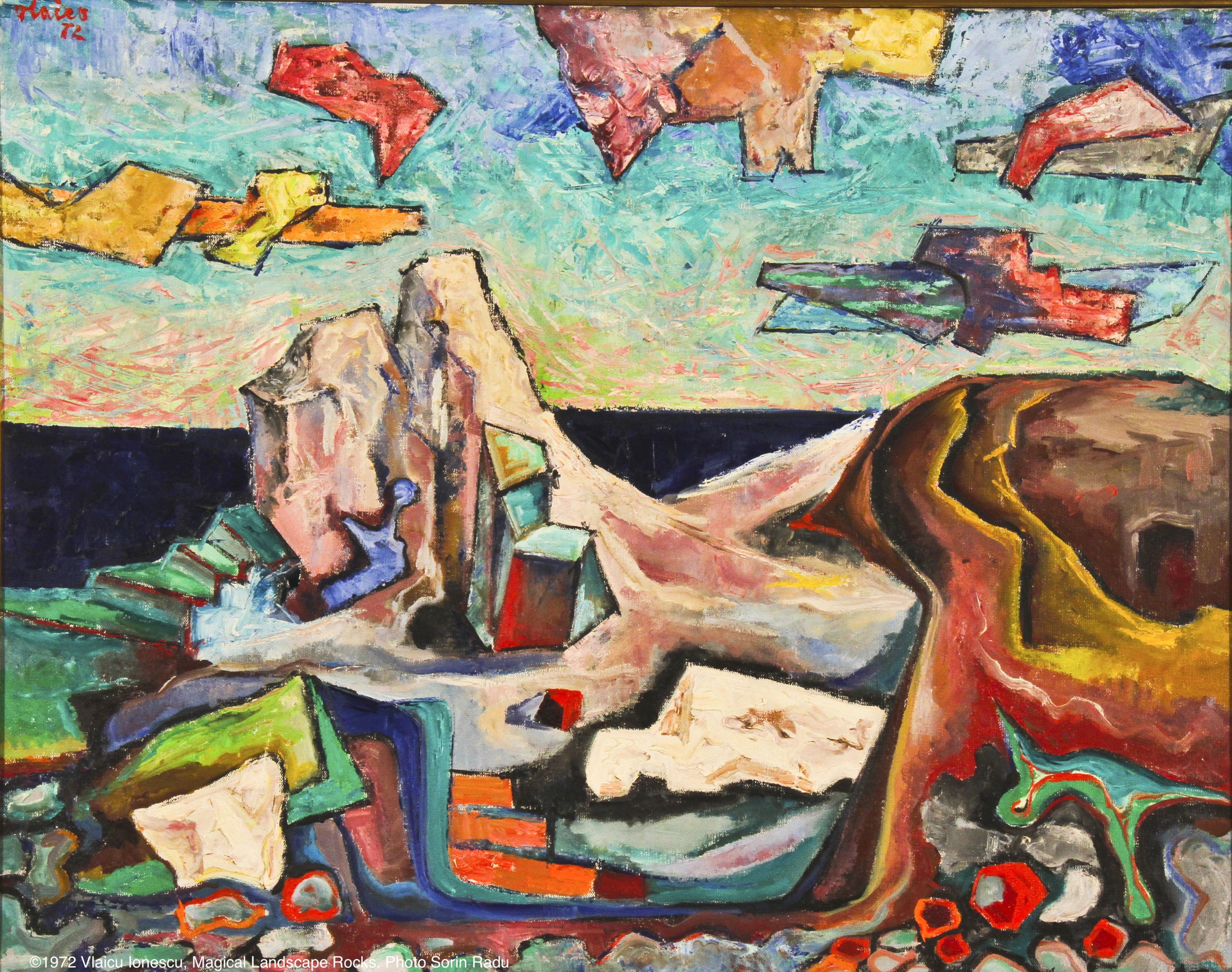
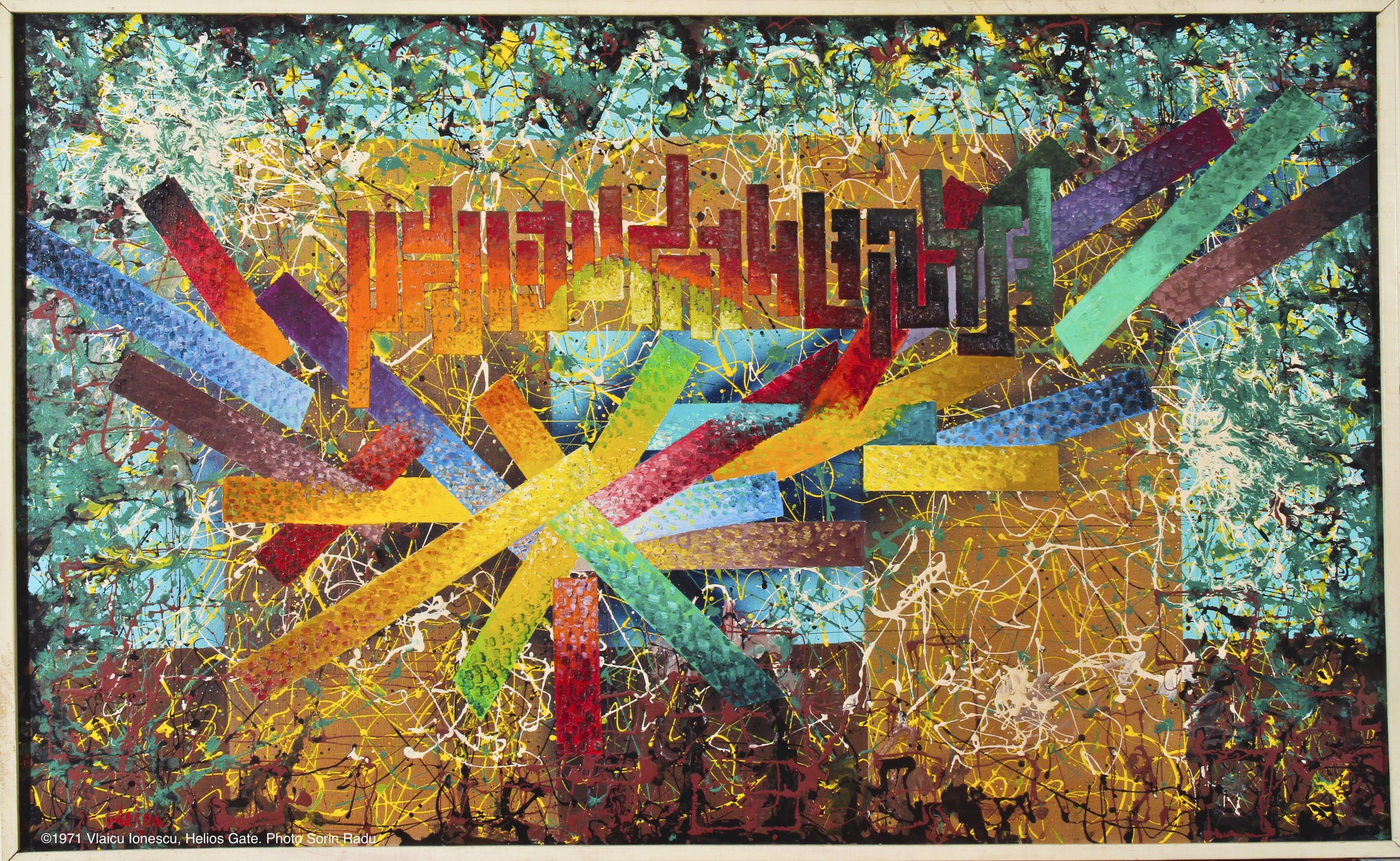
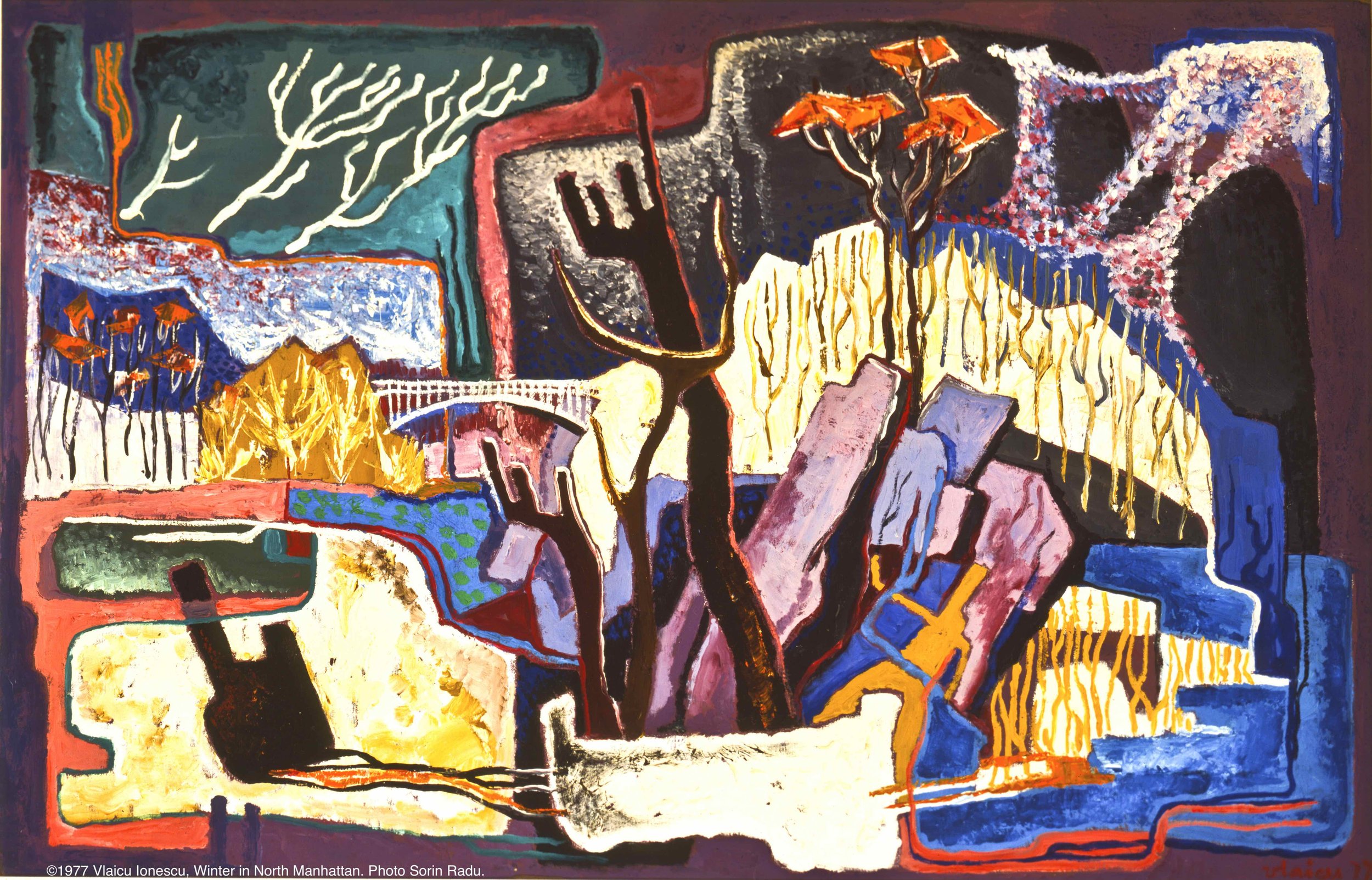
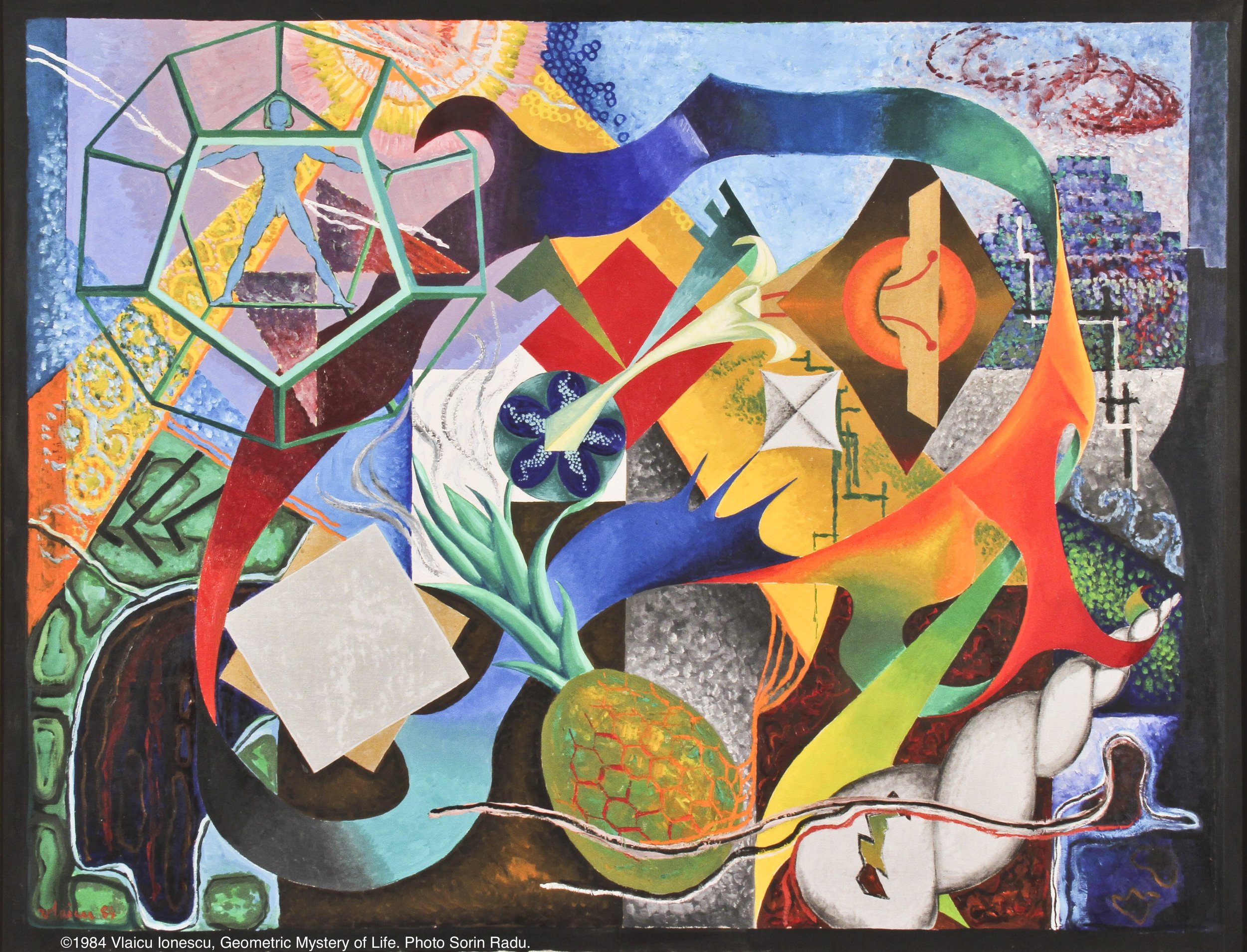
Vlaicu Ionescu—The Artist
Much more than the old masters, the modern artist evolves from the concrete image of the object to a more sophisticated interpretation. In our century, the search for new forms of expressions became sometimes so abstract oriented that it got astray not only from the sensorial aspect of things but also from any geometrical expressionist, or even oneiric, or visionary interpretation. After killing the object, after an analytical division in atomistic variety of elements, after simplifying and rejecting, the artist arrived to dead ends like „a white square on a white surface” beyond which he could not go, except by putting in the frame a clean and empty canvas.
As a modern artist, Vlaicu Ionescu also experienced several modes of expressions. He evolved from the sensorial image to structures more purified in form and substance. But what is interesting in his evolution is the fact that he didn’t abandon one way for another. The last two exhibitions in Bucharest (1968 and 1969) and the following ones in Munich (1969-1970) have shown his understanding in organizing pure forms and colors. In search of an invisible face of reality, the pictorial metaphors are taken from cells and micro-biological structure, constructed on (and against) a non-figurative background close to the abstract expressionism. The result has been a visionary expression of a transcendent level of being, a sort of intermediary level where the demiurgical forces seem to convey the non-manifested in manifested reality.
This part of pictorial research has continued during the artist’s residence in America. But parallel to this research, Ionescu has cultivated and developed the previous one: a figurative rendering of the object, yet far from any kind of realism. The impressionist experience gave him a key to express a color by its spectral components and to enhance it by juxtaposing complementary tones.
The expressionism of Van Goghian type thought him to use the power of the spontaneous linear stroke. Van Gogh dislocated the object’s contours and made them to spread in space like burning flames. He used waves of line segments to express the dynamic of the new forms. We find something similar in Ionescu’s technique, but he uses the knife instead of the brush.
The result is that his paintings are not representing an exterior atmosphere like in Impressionism, and doesn’t remain on the surface of the object. He penetrates the matter and gets from it what the physical realm can offer as the most noble and purified: the gold, the silver and the precious stones of the earth. The brush of Van Gogh changed the form of a tree, making a flame of it. The knife of Ionescu is cutting, polishing, beating and splitting the inner substance until an alchemical transmutation is achieved. It is a task of a smith and a jeweler, lead by the vision of an alchemist. And since in his paintings every element is consistent with the others, and all are harmonized by rhytm and counterpoint, we could say that the holistic aspect is not neglected, and that all is orchestrated by the mind of a composer.
[…] Vlaicu Ionescu shows that life and spirit are not to be found only in the realm of pure forms and ideas, but also in the hidden substance, in the deep interior of matter; that matter wich is ready to reveal its precious treasures only under the spell-casting eyes of the true artist.
Alberto Cernuschi, President of Caravan de France Galleries (From "Vlaicu Ionescu - the Artist", by Doina Uricariu, 2012, Ed Universalia)

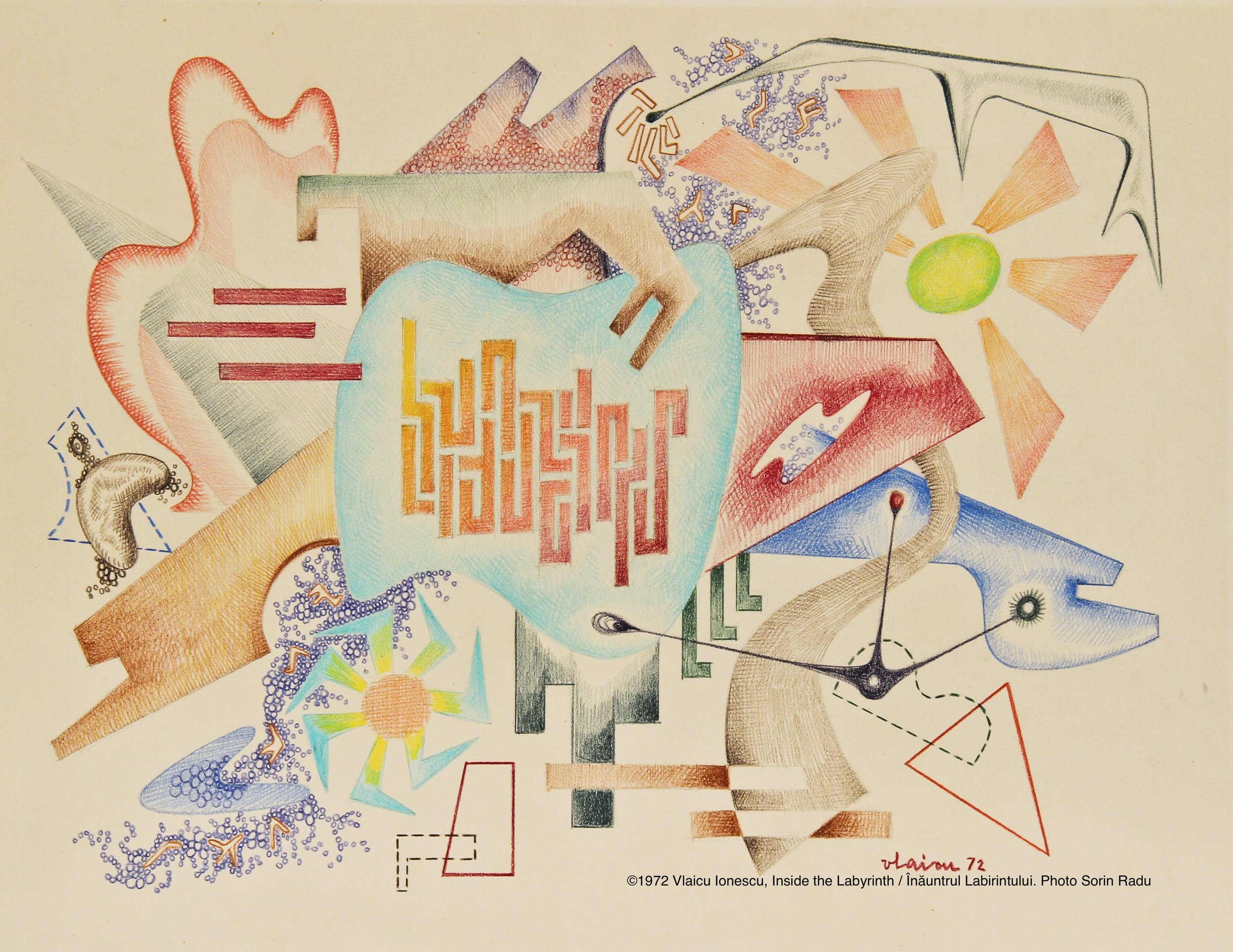
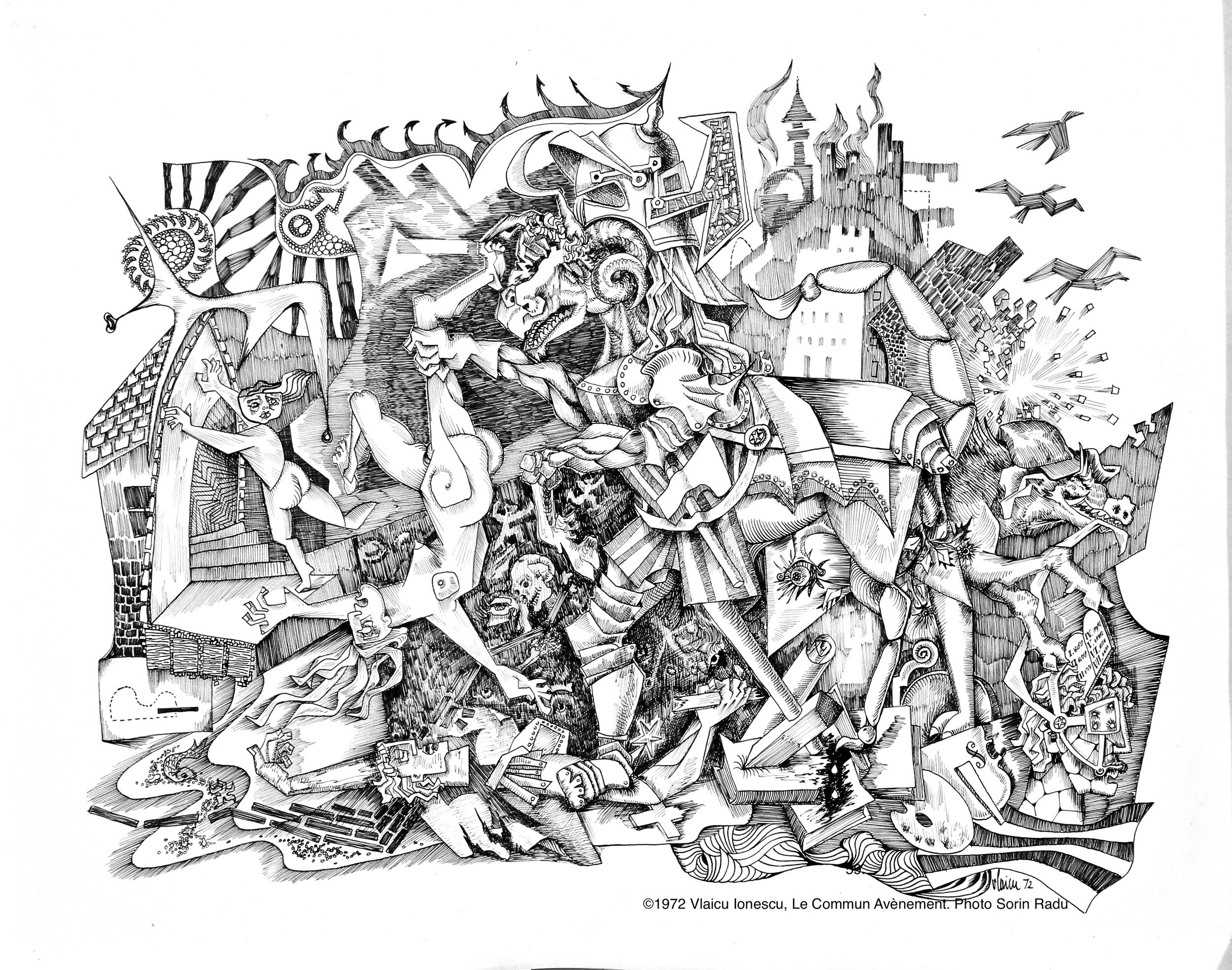
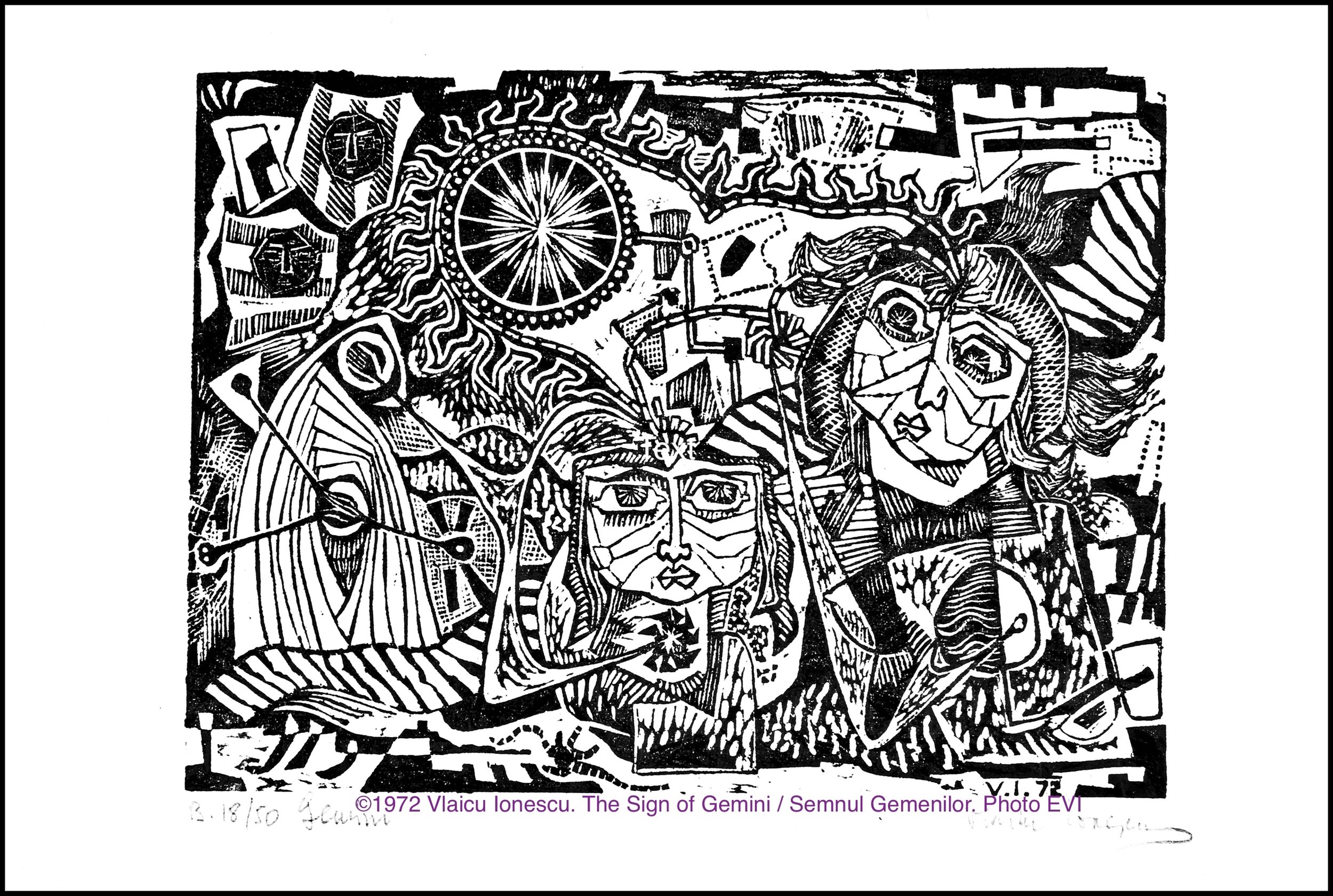
Vlaicu Ionescu, The Artist/ Pictorul, by Doina Uricariu
2012. Vlaicu Ionescu, The Artist/ Pictorul (English-Romanian Edition), by Doina Uricariu, Ed. Universalia. This first book dedicated to the life and art of Romanian-American artist Vlaicu Ionescu (1922-2002), using a rich archive of documents, photos, letters, autobiographical papers, and the artist’s lectures on art, places Ionescu in the history of modern art, with a unique plastic universe, a vivid chromatic vision, and an impressive density of symbols. The book, which covers work executed between 1945 and 1997, is exquisitely illustrated with 250 color photos of paintings and 50 photos of drawings. The well-documented edition includes an illustrated catalogue raisonné, a bibliography of selected works by the artist and writings about him, a list of his exhibitions, and essays by art critics.
In her monography, Vlaicu Ionescu, the Artist, Doina Uricariu writes :
Vlaicu Ionescu’s entire oeuvre is defined by [his own dialogue with the visible and invisible,] this dialogue that connects the act of knowing with religion, geometry with mysticism, hierophanies with realism and the tangible figurative.
Bilingual English-Romanian edition. Available from here.
The artist’s exhibition at Van Der Straeten Gallery of Contemporary Art, Medison Ave, New York.
Tribute to Solzhenitsyn -- A triptych
Drawings and Essey by Vlaicu Ionescu
Anyone interested in the significance of certain contemporary events could not help but be struck by the Solzhenitsyn phenomenon. The triptych that formed the central panel of my last exhibition, an exhibition dedicated to Solzhenitsyn, intends to translate into graphic visual forms the metaphysical, supra-historical meaning of the historical moment that modern man is going through. Solzhenitsyn's personality—along with his work—is taken as a symbol of modern man's salvation, transfiguration, and resurrection from the inferno in which he was led by the dramatic experience of the heresies of the Proletarian Era, heresies that culminated in the overthrow and annulment of traditional values by a Stalinist type of totalitarian autarchy. READ MORE…
“Son of a priest, Vlaicu Ionescu possesses that rare mystical density, which gives Man the fullness of its vertical dimension”



